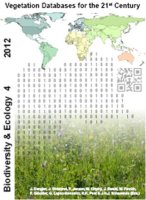Biodiversity & Ecology
Short Database Report Open Access
CoenoDat Hungarian Phytosociological Database
Keywords: habitat; Pannonian biogeographical region; plant community; syntaxonomy; vegetation.
 English
English
Abstract: Hungary has a long tradition to apply, adapt and improve the methods of Central European phytosociology. In the 1950s a national programme was launched to survey and describe the vegetation of the Hungarian landscape by B. Zólyomi, R. Soó and their followers. After some prosperous decades this programme had fallen back, but a new generation of vegetation ecologists started to revitalize this fieldwork-based and data intensive science of plant species co-existence. A special collection of papers and manuscripts was set up in the Institute of Ecology and Botany, Hungarian Academy of Sciences. The main scope of this collection focuses on phytosociology and datasets (relevés) of the vegetation of the Pannonian Region, called CoenoDat Archive. The CoenoDat Hungarian Phytosociological Database (GIVD ID EU-HU-003) was built upon this collection and extended by new relevés.
Suggested citation:
Csiky, J., Botta-Dukát, Z., Horváth, F., Lájer, K. (2012): CoenoDat Hungarian Phytosociological Database. – In: Dengler, J., Oldeland, J., Jansen, F., Chytrý, M., Ewald, J., Finckh, M., Glöckler, F., Lopez-Gonzalez, G., Peet, R.K., Schaminée, J.H.J. [Eds.]: Vegetation databases for the 21st century. – Biodiversity & Ecology 4: 394–394. DOI: 10.7809/b-e.00183.


